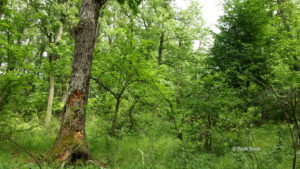General description of project area
Name of the project area: Cserépfalu környéki erdők
Surface area (ha): 89.990
EU protection status SPA: NATURA 2000 Code HUBN10003
EU protection status SCI: NATURA 2000 Code HUBN20002
Other protection status according to national or regional legislation: National Park
The main uses of the project site: The main land uses: Nature conservation 100%
The ownership status: Sate property 94%, private property 6%

Scientific description of project area
The project area is located in the South-Bükk minor landscape mainly on karst. The area is dominated by 91M0 Pannonian-Balkanic turkey oak –sessile oak forests (61%), which is mixed with 91H0 *Pannonian woods with Quercus pubescens forest’s area (13%), 91G0*Pannonic woods with Quercus petraea and Carpinus betulus forests (4%), 6240*Sub-Pannonic steppic grasslands (5%), and 9180* Tilio-Acerion forests of slopes, screes and ravines (2%). Due to the former forestry activities there is about 3% Pinus sylvestris plantation and about 7% of the area is covered by Robinia pseudoacacia.
The most important plant species are the Galanthus nivalis, Pulsatilla grandis and Thlaspi jankae of the area.
Animals of the area:
- Mammals: Barbastella barbastellus, Canis lupus, Lynx lynx, Myotis bechsteinii, Myotis myotis, Rhinolophus hipposideros
- Birds: Bubo bubo, Circaetus gallicus, Dryocopus martius, Dendrocopos medius, Emberiza cia, Ficedula
albicollis, Picus canus, and Strix uralensis. - Amphibians: Bombina bombina
- Beetles: Cerambyx cerdo, Eurythyrea quercus, Limoniscus violaceus, and Lucanus cervus
- Butterflies: Callimorpha quadripunctaria, Dioszeghyana schmidtii and Lycaena dispar
Importance of the project area for biodiversity and/or for the conservation of the species /habitat types targeted at regional, national and EU level
The different oak forest stands (91G0, 91H0, 91M0,) are very important habitats of several strictly protected species listed in the scientific description part, hence a proper nature conservation management of the oak forests is required. Especially Canis lupus and Lynx lynx require large undisturbed continuous forest cover. However to be able to do this the private forest part must be purchased, the Pinus sylvestris forest must be converted to oak forest and the invasive species must be eliminated in the area. The stand structure, composition, mixture rate and dead wood of Pannonic woods with Quercus petraea and Carpinus betulus, Pannonian woods with Quercus pubescens and Pannonian-Balkanic turkey oak – sessile oak forests of the area, can be improved by the proper nature conservation management. These forests and the presence of Sub-Pannonic steppic grasslands makes the area important in biodiversity and EU point of view. The naturalness and biological diversity of the area can be relatively quickly improved by a proper nature conservation management.
Flagship species in project area
Protaetia speciosissima, Zamenislongissimus, Plecotus auritus